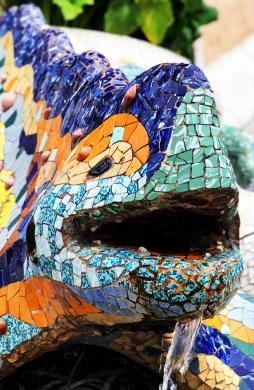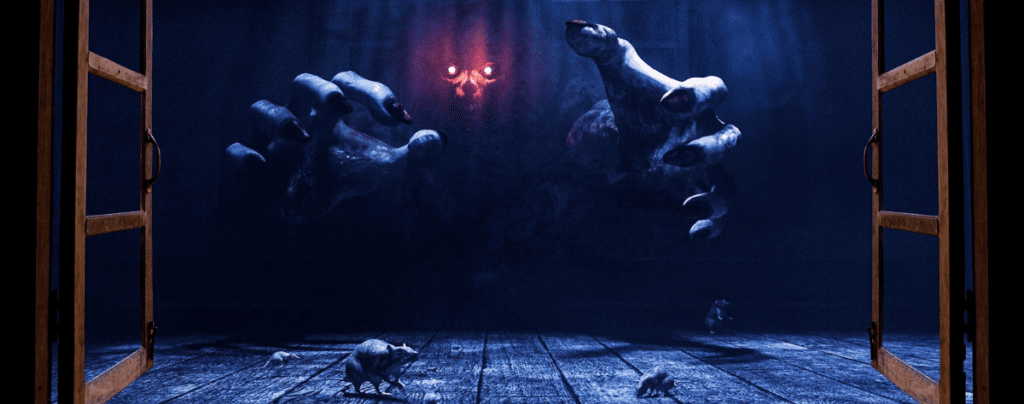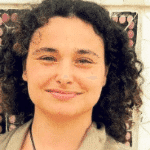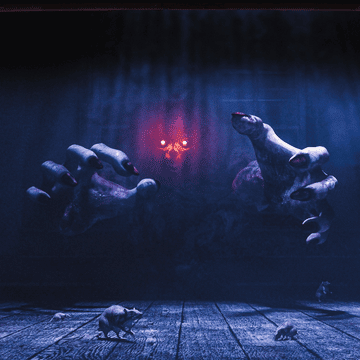
Scary guide to the haunted Barcelona
BARCELONA HOUNTED HOUSES, PLACES AND BUILDINGS
Barcelona has a dark side that many visitors aren’t aware of, but that locals fear. Scary events have taken place since the remote times of the Middle Ages. Places where wizards lived (on Carrer Estruc), witchcraft schools (Neu de Sant Cugat street), exorcism houses (7, Mirallers), hostels from where guests disappeared mysteriously (Flor de Lliri street), people that will make pacts with the devil (like the owner of the building on Josep Torres, 20, decorated with demon faces), gallows locations… We even have our own serial killer, Enriqueta Martí aka the Vampire of Barcelona, who killed orphans to make potions she’d sell to the high society.
But today we are focusing on paranormal activities: haunted houses, ghost sightings, poltergeist that have been known by Barcelona people for a long time. Some of them where impressive aparitions that happened long ago, while some other are lost souls that continue to haunt determined spots that were tied to their lives. Are you ready to dive into the dark side of Barcelona?
Historically haunted places in Barcelona
1
Boqueria Market (1835)
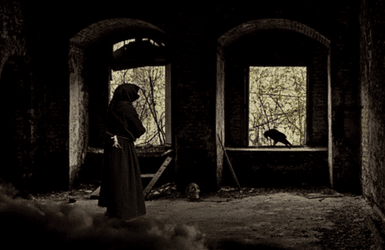
The famous Boqueria Market was built over the ruins of the male convent of the Barefoot Carmelites of Saint Joseph. According to the story, in 1835 the monks had relaxed their way of life up to the point of deciding they weren't going to pray on the date of their patron saint Our Lady of Carmen. Only one young monk opposed to that, but the prior of the convent didn't care.
The next evening, when everyone was sleeping, a low sound spread through the convent awaking the monks. Still sleepy, the followed the sound that got louder as they approached the church. There they found a choir of skeletal monks singing sinister psalms. The monks decided to wait until the songs were over, then they lit up candles and led the ghosts back to their tombs in the convent cemetery. The tombs were open, and the ghost monks went back in, after which the tombstones closed back over them.
When the monks went back to the church, they found right where the ghost choir had been singing, the corpse of the young monk that had called off the rest of the community for their actions. And 10 days later, the convent was destroyed in a fire and the monks perished in it. Since then it is said that every July 15th, on Our Lady of Carmen’s Eve, it is possible to hear the sound of ghostly steps and the voices of the dead monks singing psalms around the market.
2
Liceu Opera House (1861)
And apparently the ghost of one of the dead monks would appear accusing the attendants of committing sacrilege. Then in 1861 the theater was totally destroyed in a fire, and among the still smoking ruins the police found a sinister note that said “An owl I am, alone I am. If you if build it again, I’ll burn it again”.
Nevertheless, the reconstruction of the theater started soon, and despite a flooding that affected the works badly (and rumors starting about the place being cursed), it was rebuilt in just a year. However, the malediction became true in 1994, when during some repair works a spark hit the theater curtain and the building, made of wood, disappeared under the flames in minutes. The Theater was rebuilt again, the works finished in 1999. Will it burn again?
3
Palau Guell / Avemaria House (late 1800's)
The number 5 of Nou de la Rambla used to be known as the “House of the Avemaria” or the “House of Fear”. At night one could hear lamentations, loud bangs and clinging of chains coming from it. The passers-by would make the sign of the Cross and pray a Hail Mary (“ave maria” in Spanish) to protect themselves. And exorcists would come often to pray as well, until the supernatural events died away…
When the Ave Maria house was finally tored down, Eusebi Guell bought the plot to build there his Palau Guell. It is said that his wife Isabel Lopez de Comillas never liked it, and complained about the strange noises that could be heard in the house.
4
43, Francesc Giner (1935)
By then the neighbours of the entire building had woke up because of the loud bangs, and they called the night watchman, who couldn’t find the origin of the noises. All of a sudden the bangs stopped and the neighours retired back to their homes, but they started again, and by the time Mr. Montroig arrived from work, they were still going on. He reported them to the police, but again the origin of the noises couldn’t be found after a thorough research.
The next evening nothing happened, and everyone thought that the mysterious noises were over. But the next night they started again. In the apartment of the Montroig, the neighbors witnessed a chair levitate, a lamp spin, cutlery floating in the air and the hands of a clock go mad. Some saw white shadows gliding along the corridors and making the temperature drop. Then all of a sudden a violent hailstorm covered with ice the building courtyard.
The case was covered by the media, and the police stationed a couple of guards by the door of the building to keep onlookers away. But the strange phenomenon wouldn’t stop until not all the inhabitants of the building eventually moved out. Some believe the teenage son of the Montroig, who was ill at the time, could have been responsible for the poltergeist. But then… what about the white shadows in the corridors?
5
Sagrada Familia (1930's)
They also broke into the crypt, where they desecrated the tomb of Gaudi’s patron, Josep Maria Bocabella but somehow they left Gaudi’s tomb untouched. It is said that little after that happened, people started seeing blue lights on the Sagrada Familia towers and the building site a night. The police couldn’t find a reason for them. The lights continued to be sighted until little after the crypt was re-sacralized.
Could the lights have been the spirit of Mr. Bocabella, whose rest had been disturbed? Or maybe Antoni Gaudi, whose eyes were blue like the lights, desperate for the loss of his plaster models? In any case, that’s not the only Gaudi ghost that’s been heard off: some believe that his soul still haunts the gardens of the Hospital de la Santa Creu where he passed away.
Barcelona ghosts that are still around nowadays
6
Rocafort metro station (Eixample)
But there’s one station still in use that is believed to be cursed and is maybe one of the most haunted places in Barcelona: Rocafort, on Line 1 (red line). Its story was haunted from the beginning, when during its construction when a mudslide killed 11 workers. Also, before the stations were adapted for the blind, in several occasions blind people visiting the nearby office of ONCE, the Spanish blind people society, fall to the tracks and a few of them were run over.
The thing is that this station concentrates the highest index of suicides on the subway of Barcelona, with 4 in a month in one occasion in the 1970’s. The metro staff fears working in that station at night, when the security cameras sometimes show people walking along the tracks when the station is closed to the public. And apparently, a medium once was able to see there a child playing with a ball along the platform – and certainly some years ago a child that played with a ball fell to the tracks and was killed by a train.
7
Plaça del Comerç (St. Andreu)
The Plaça del Comerç is a lively square in the Sant Andreu district, that features an elegant streetlamp in its center. And it is a place where people seemingly report ghost sightings several times a year. They happen after dark, between 9PM and midnight. That’s when a shadow can be seen crossing the square when the place is empty: only the light of the lamppost in the middle of the plaza reveals the shadow of the ghost passing by.
8
Montjuic Cemetery (Sants-Montjuic)
She was famous for the memories that she channeled from Father Germano, a ghost that contacted her and became her spiritual guide. She was buried in the area where in those times were buried those who didn’t align with the official moral. Anarchists and working class advocates, people executed by the regimen, Jewish… Not far from here there’s the tomb of another spiritist, José María Fernández Colavida. In any case, she’s not surrounded by a quiet (dead) crowd… And that must be why the gravestones in this area appear cracked and disarranged more often than they should…
9
Arrabassada Road (Sarria-Sant Gervasi & Horta-Guinardo)
Yes, Barcelona also have its own “girl of the road”. The female hitch-hiker that you pick up along a road and starts getting nervous as you approach a certain curve, and tells you to be very careful because it’s dangerous, and as you enter the curve she yells and disappears. She appears by the “revolt de la Paella” on the Arrabassada road. The Barcelona version has its own unique details, though: she’s dressed in a white robe and doesn’t yell, but rather makes you slow down or even stop to save you from a crash with a vehicle you didn’t see coming. Then she tells you she died there and her mission is to stop others from ending like her.
There’s even a story about a young man that came from a party and picked her up on the road and asking him to stop to let her out just before the curbe. That quick stop saved him from a collision with a truck. Some time later he attended a party where the host looked very similar to the girl of the curbe. She happened to be the niece of a lady that got killed in a car crass in that precise spot.
10
Teatre Romea
More than once she saw a shadow pass behind the door window, when she knew no one was there. Other times she’ll find unplugged the heavy multiple plugs that she’d always leave connected because they were hard to unplug. I also remember speaking to Juan, the stage manager, and he’d tell me that the theater was haunted by Margarida Xirgu, a famous actress from the early 1900’s, who performed many times there.
According to Juan, strange noises could be heard and shadows could be seen at night in the empty corridors of the backstage. And even the safety guys refused to work on All Saints Eve (the local equivalent to Halloween), when paranormal events were even stronger to the point of heavy palm tree pots moving by themselves in the theater lobby.
Other famous ghosts and haunted places near Barcelona
11
Castell Torre Salvana (Colònia Güell)
Near another Gaudi site, there’s another landmark famous for the paranormal events that have happened and continue to happen there. Near Gaudi’s Church of Colonia Guell in Santa Coloma de Cervelló, there’s the remains of an ancient fortress documented since 992, and that the locals call “The Devil’s Castle” (Castell del Diable). Countless psycophones have been recorded here.
Testimonials claim to have heard voices of females crying, or noises that remind you of the middle ages such as sword battles and cannon shots. Others have seen a dark smoke come out of the watch tower and mysteriously spread around the castle grounds. Some have even seen a little with a bullet wound on her forehead. But the scariest are the reports of people that felt someone grabbing them by the arm or the leg and pulling them.
12
Parador de Cardona
Outside of Barcelona there’s another haunted castle, but you can sleep in this one, as it’s now a hotel with a haunted room. The Castle of Cardona, atop a scenic hill, was the residence of the Counts of Cardona, also known as the Royals Without A Crown, because in the middle ages they were as powerful as the Catalan King. Nowadays the castle has become a Parador, a chain of hotels run by the Spanish Government in unique landmarks.
According to the legend, a Christian girl named Adalés fell in love with a young Muslim boy in the 1000’s. Her family, feeling dishonored, locked her in the Torre Minyona, one of the watch towers of the castle, until she died. Her soul is supposed to be the one haunting the room 712, which interestingly is the closest to said tower.
The guests that have stayed in this room report to have heard strange noises and whispering. Others have felt a presence in the room. And often they wake up to find the furniture pushed from their original location to the center of the room and the taps of the sink open. The least that happened to people that slept there were bad nightmares. Because of that, this room is only booked upon request, rather than being randomly assigned to guests. And the cleaning staff only works there in couples.
If you are curious, a Spanish youtuber spent a night in the room 712 and recorded the experience for his Halloween week special. He said nothing paranormal happened and he and his girlfriend slept fine but… you do see the left curtain of the four-poster yank for a second on the minute 17:47… Was this staged or did Adales come to check on them?
13
The Ghost of Comte Arnau
The most famous ghost in Catalonia is definitely the Comte Arnau. This historical character was a feudal lord in the 1300’s, the Count of the Mataplana Castle. He’s said to have abused this power position against his servants in many different ways, such as promising his workers a bag of wheat for each step they’d build to reach the Virgin Chapel and the Montgrony Sanctuary, but never keeping to his promise.
He went into an arranged marriage with a 15 years old that lacked of attractive when he was twice her age. Which is why he decided to seduce the abbess of the Sant Joan de les Abadesses monastery. When she died, he stole her corpse, jumped on his horse and run away in the middle of a storm until he fell off a cliff. This is why his soul was damned and he must restlessly run on his horse on stormy nights to pay for his sins for eternity, followed by a pack of wild dogs that spit fire through their mouths, ears and eyes.
What are your favorite Barcelona haunted places?
Marta
RESEARCHING FOR A TRIP IS TIME-CONSUMING…
Need more inspiration?
Our 100% FREE Barcelona Collection will give you everything you need to organize the trip of your lifetime to Barcelona.
BEST INSIDER TIPS FROM THE PROS!
